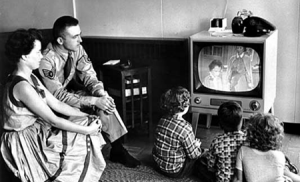 I have never had cable TV during my adult life, mostly because I refuse to drop 30 to 100 or more bucks a month for the opportunity to channel surf for hours on end or watch 16 and Pregnant. Between my DVD collection, Netflix and the wide world of the Internet, I can entertain myself pretty well without a monthly cable bill.
I have never had cable TV during my adult life, mostly because I refuse to drop 30 to 100 or more bucks a month for the opportunity to channel surf for hours on end or watch 16 and Pregnant. Between my DVD collection, Netflix and the wide world of the Internet, I can entertain myself pretty well without a monthly cable bill.
Turns out I’m not unique. More and more young adults are forgoing cable TV when they move out on their own, and in 2011, more than 1 million cable subscribers ditched their pay-TV service.
That’s cool and all for those of us saving hundreds of dollars a year by eschewing cable, but advertisers have had to rethink ways to get their ads in front of cable-free viewers’ eyeballs. More people are watching TV shows, movies and videos on Hulu, YouTube and Netflix, as well as watching original video content on sites like blip.tv, Funny or Die and Streamin’ Garage. Last year, a survey from Harris Interactive found that 53 percent of all Americans watched streaming online content. And that number’s only going to increase.
So of course, advertisers have put two and two together and realized that not only can they advertise on this content — you’ve seen those 30-second ads that play before your favorite videos on YouTube and Hulu — but that it’s actually an effective means of advertising. In a 2012 BrightRoll survey, 64 percent of advertisers said that online video advertising is equally or more effective than ads on television. Unlike on TV, ads on Hulu and other streaming sites don’t have to compete with other ads (or people’s tendency to channel surf), and they’re short and sweet and get out of the way so you can watch your show.
This type of advertising works out well for the sites hosting streaming shows — in 2011, blip.tv’s top show made over $500,000 in shared ad revenues, and Hulu grew by 60 percent to reach $420 million in revenue.
Getting your TV fix on the Internet is still relatively new, and most people are not going to be throwing their cable boxes out the window anytime soon. Still, I’m rooting for the Internet, and I can’t wait to see how we’ll be watching movies, TV shows and videos five or 10 years from now — and how advertisers will adapt.
Related articles
 Everything I Needed To Know About Talent Management I Learned from Joe Strummer
Everything I Needed To Know About Talent Management I Learned from Joe Strummer #ShitBretSays – Love Is More Important than Work
#ShitBretSays – Love Is More Important than Work



